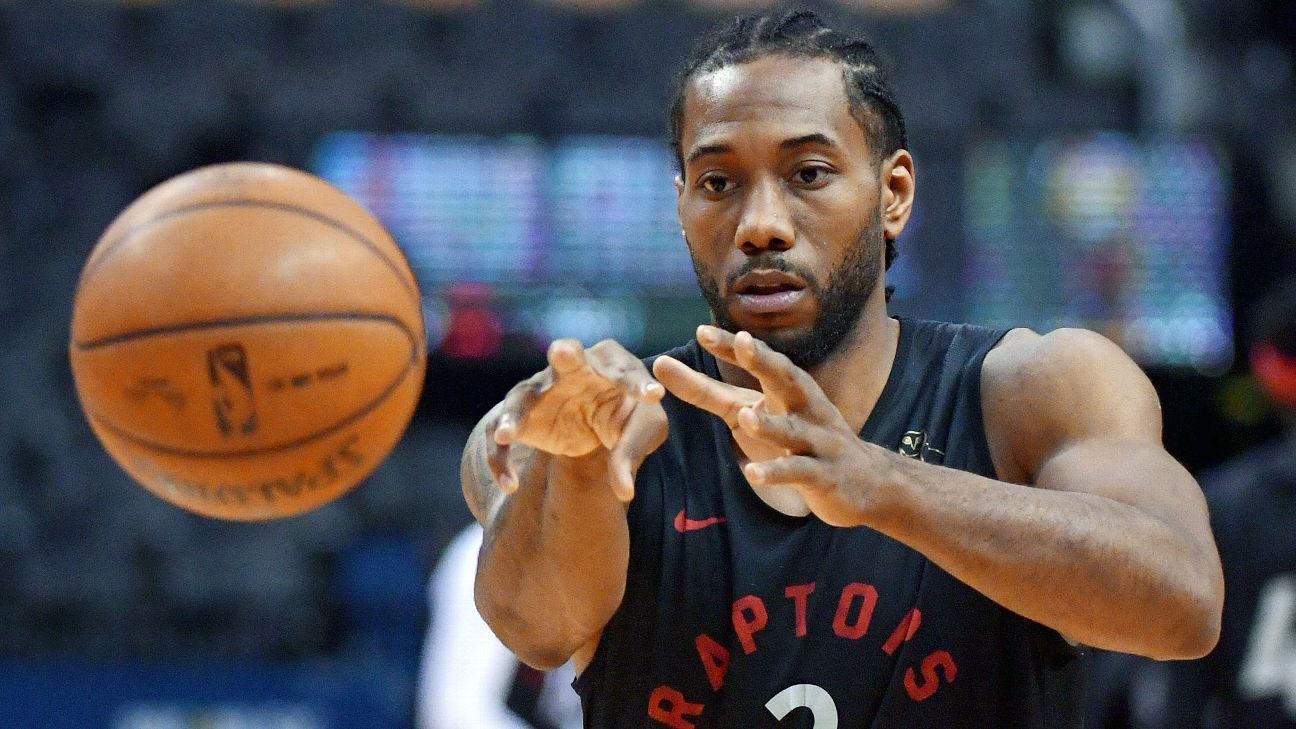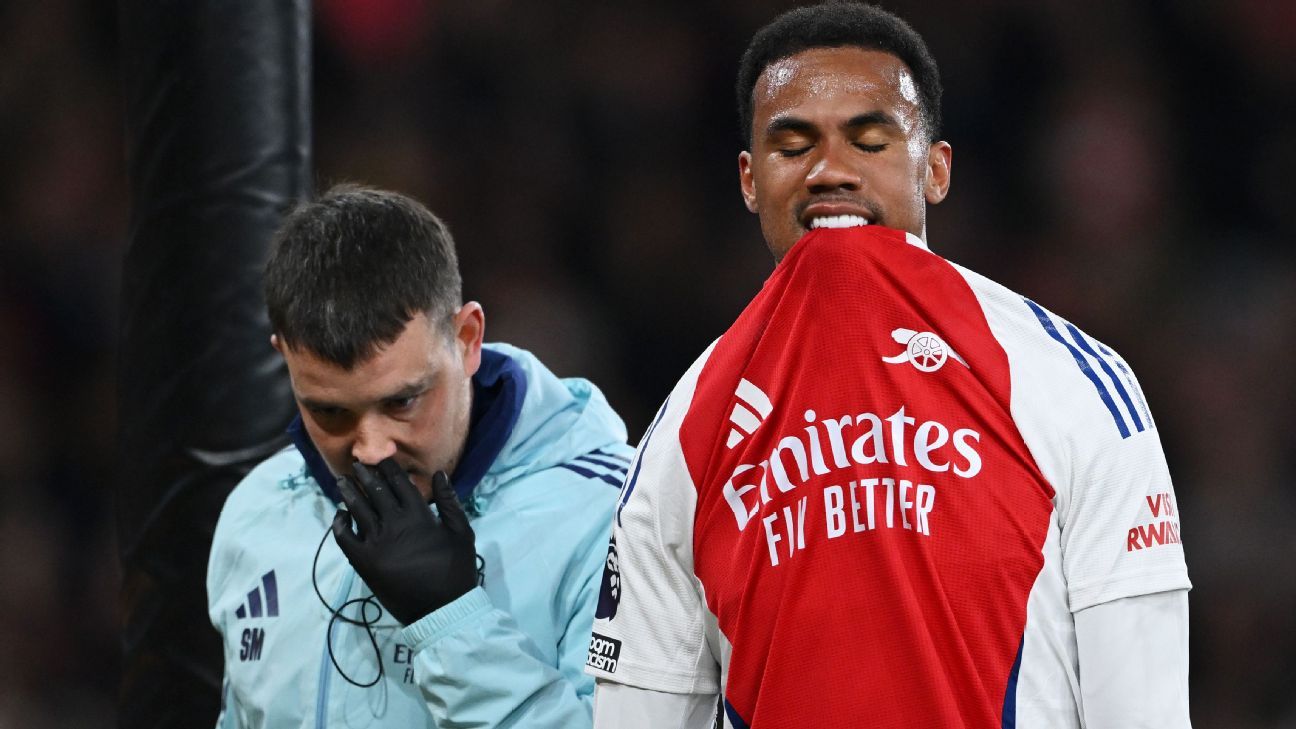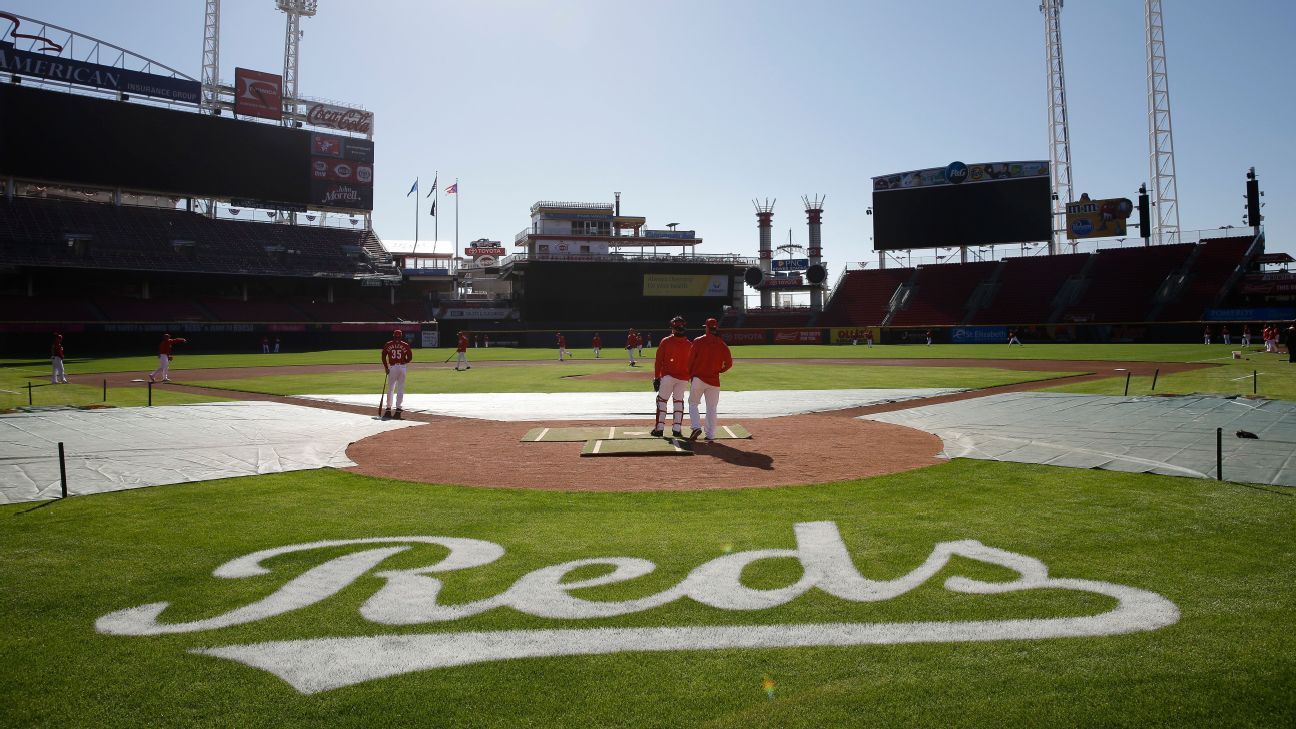
Kawhi Leonard nudging Paul George out of Oklahoma City with two years remaining on George's contract will go down as a watershed moment in the NBA -- for the teams it built and tore apart; for the bounty the Thunder received; but mostly for what it signified about the degree to which superstars now control roster-building.
Leonard lending George leverage is a new extension of player empowerment. Kareem Abdul-Jabbar demanded a trade in 1974. LeBron James, Dwyane Wade and Chris Bosh synchronized their free agencies to build their own team in a city of their choosing.
Nine years later, James publicly lusted after Anthony Davis -- a player under contract to another team who soon requested a trade. Rich Paul, the agent James and Davis share, cooled some of the broader market in a way that ended up favoring James' Los Angeles Lakers. Leonard's ploy with George to join forces on the LA Clippers was essentially a stealth, sped-up version of that -- though with George under contract for at least one season longer than Davis.
Under the terms of an NBA contract, a team agrees to pay a player in exchange for basketball services -- with the understanding that the team can trade that player whenever it wants. The best players trading themselves reverses that dynamic. Trade requests don't tilt the playing field out of balance. They even it.
Some officials -- and even some agents -- argue players put teams at an unfair disadvantage when requests come with short destination lists intended to chill the market. That is unpersuasive. Suitors understand their odds of re-signing traded stars. A lot of teams cornered into dealing stars have done well despite such lists becoming public.
The best players have few ways to leverage their stature. They get drafted and sign four-year contracts. After four seasons, they enter restricted free agency; their team has a right to match any offer. It takes at least seven years before the world's best players have total freedom in choosing where to play.
All along, the NBA's maximum contract limits their salary to something below what they would earn in an open market. They have few levers to pull. A trade request is the most potent.
In theory, trade requests grow more effective as a player approaches free agency: I can leave soon, so you might as well trade me now. The NBA and the players' union accelerated that process by agreeing to reduce contract lengths. Players are bolder about taking two- and three-year deals if doing so means reentering free agency after their 10th season -- when most become eligible for the largest possible contract.
The NBA knew shorter deals would generate more player movement, if only because players would cycle in and out of free agency more often. I'm not sure they expected something like what transpired with Leonard and George.
The Thunder could have said no to George. His contract runs through at least the 2020-21 season. George is somewhere between the league's eighth- and 11th-best player. No matter the return, losing a player that good in his prime hurts. You get only so many chances to acquire one.
But acting with so much time left on George's deal juiced that return. Agents defend trade requests by pointing out it is better for the jilted team than having a superstar walk for nothing. They are inarguably right. The Thunder and New Orleans Pelicans -- after their trade of Davis to the Lakers -- have futures that were otherwise closed off to them. They might end up the ultimate "winners" of their respective trades.
But this is basketball, not asset-ball. The point is to build actual teams. The combination of shorter contracts and more frequent trade requests probably compresses the window to build and replenish teams, executives say.
I wonder if we are losing something -- from the perspectives of team-building, basketball style and fan engagement. It probably is harder now to build great teams that can sustain for six, eight, even 10 seasons. The apex of basketball happens when great players stay together for a long time -- when they develop chemistry and mutual understanding so deep that they almost act as one shape-shifting entity. They communicate in winks and nods. They anticipate where each teammate will be before he gets there. It is almost as if they can pass and cut blindfolded.
Are we losing that? Some executives have speculated for years that coaches might simplify schemes as a way of adapting to roster churn. Others find this concern a little naive. One executive from a team with a fairly intricate offense noted his team hasn't had trouble finding free agents with the feel and smarts to pick it up fast.
But that same executive -- and several others -- cited the "beautiful game" of the 2013 and 2014 San Antonio Spurs as the sort of stylistic achievement, almost a basketball euphoria, that will be harder to reach if the league trends toward more superstar player movement. San Antonio coaches and executives were adamant they needed years to master the style that obliterated LeBron's last Miami Heat team into abject, shoulder-sagging surrender. Even San Antonio's role players -- Patty Mills, Tiago Splitter, Boris Diaw, Danny Green, Cory Joseph -- were in at least their third seasons with the Spurs when they found nirvana in 2014.
The counterpoint, of course, is the Golden State Warriors. They redefined basketball style. Their core players stuck together for a half-decade, and their three founding superstars remain. They just made five straight NBA Finals. They might not have made all five without the fluky cap spike that allowed them to add Kevin Durant, but they are damned good without him.
The Warriors drafted those three stars, including one all-time great player in Stephen Curry. They rose to prominence with all three still on rookie contracts, leaving flexibility to dot the roster with win-now veterans. They re-signed Curry and Draymond Green to extensions below their respective maximum salaries -- way below in Curry's case. Teams rearranging entire rosters to add multiple max-salaried veteran stars cannot replicate that model.
Those kinds of microwaved teams might just have a limited shelf life. Veteran superstars are about 30, or older. Upending rosters to fit them often leaves little depth or means of adding any. Great teams draft at the bottom of the first round. Most one-and-done prospects selected in that range will not be ready to play real postseason minutes until the core superstars have aged.
Teams deal picks in acquiring stars anyway. After years of teams hoarding first-round picks like gold, the Lakers, Clippers, Warriors, Utah Jazz and Houston Rockets tossed away at least two apiece this summer. Most did so in pursuit of legitimate stars, and for the L.A. teams, three of the top 12 players in the league -- and two of the best half-dozen. You gather picks precisely to get those sorts of players when you have a window to win big. The difference is you used to get them for longer.
The Clippers traded an unprecedented bounty -- five picks, two swaps, Danilo Gallinari and one good young player in Shai Gilgeous-Alexander who might be more valuable than all that stuff -- to effectively acquire both George and Leonard. Leonard ended up signing for only two guaranteed seasons; he and George can both hit free agency in two years.
Two years is nothing. If one star tweaks a knee in May, Year 1 is toast, and they are instantly on expiring contracts. Maybe George and Leonard -- natives of the L.A. area -- have indicated a willingness to re-sign in 2021; Leonard might have insisted on the two-year deal to get back into free agency after his 10th season. But things can change. If Year 1 goes sideways, the noise about the future of the George-Leonard partnership will intensify.
As one rival executive put it, the Thunder-Clippers trade could go down as "one of the two or three most lopsided deals ever, and also one the Clippers were right to do anyway."
Elsewhere in the league, continuity lives. The Milwaukee Bucks, Denver Nuggets and Portland Trail Blazers are banking on it. They have to. An underplayed subplot of this summer is that five superstars relocated to New York and Los Angeles. You can gloss over it by pointing out that the Nets and Clippers were never free-agent destinations and that the Knicks whiffed again. Fair.
But the photo negative almost never happens. Multiple top-10 players do not conspire to get to Indiana, Milwaukee, Charlotte, Oklahoma City, Portland, Detroit, Minnesota. It has rarely happened other than (kind of) in LeBron's second Cleveland stint, and waiting for a generational player to be born near your non-glamour market -- and to feel the pull of home -- is not a replicable plan.
Teams in those markets can't afford to hemorrhage picks the way Houston, Golden State and the L.A. teams just did.
Those teams -- and the league office -- are reckoning post-Kawhi with what the endgame of player empowerment might look like. When will a superstar coming off his rookie deal sign the one-year qualifying offer -- allowing him to enter unrestricted free agency after his fifth season and signaling his intention to leave?
Qualifying offers are getting huge now -- into the $15 million-plus range for top draft picks. That is about half of what those players could earn in that one season by signing new long-term max contracts, but it's life-changing money. What if a player really wants out? What if he has a huge shoe deal?
What if the players' union pushes for the abolition of restricted free agency in the next round of collective bargaining agreement talks?
"We have always strove to loosen the restrictions in free agency," says Michele Roberts, executive director of the National Basketball Players Association. "We will do that again in the next CBA negotiations."
On the Bill Simmons podcast last week, Simmons and I discussed what Gersson Rosas, Minnesota's new president of basketball operations, might say if Karl-Anthony Towns requested a trade tomorrow. My response: Remind Towns he is under contract through 2023-24 and reassure him the Timberwolves will build a better team around him.
That would probably work. Time is on Minnesota's side. But what if a player in Towns' position pouts in practice and decides to play at three-quarters speed until his request is granted? What if he complains of general soreness -- back, knee, whatever -- and asks to sit out for maintenance?
Vince Carter mailed it in until the Toronto Raptors traded him to the Nets in 2004. Joe Vardon, then of Cleveland.com, reported Kyrie Irving threatened to undergo knee surgery before training camp in 2017 if the Cavaliers did not move him. (Irving later denied that. ESPN's Dave McMenamin reported Irving threatened to skip training camp. Irving eventually had knee surgery while with the Boston Celtics.) Could the Spurs have brought Leonard back into the fold for the final year of his contract in 2018-19 had they refused to trade him? Jimmy Butler -- General Soreness himself -- threw a one-man rebellion until the Wolves caved.
Requesting a trade does not (to me) amount to breach of contract; teams trade players all the time. But some of the above scenarios at least approach that territory. Teams can fine players for sitting out without good cause. They never will, because they know doing so will alienate other stars.
These kinds of doomsday scenarios sound far-fetched. In the aggregate, that is probably correct. Few players are prepared to toss away entire seasons and stain their reputations. Teams with time on their side can wait players out. But basketball is a sport of stars. It takes only one or two veering into this area every decade for it to be something that matters. People around the league are absolutely scared of it becoming a thing.
As for the nuts and bolts of it all, there are some tweaks under discussion, including returning to longer contracts or providing incumbent teams even more of a years-and-money advantage. Not long ago, a lot of teams agitated for a move away from longer deals; bad six- and seven-year contracts locked them in cap prison.
But one key variable has changed: The cap goes up every season. From 2005 through 2014 -- almost a full decade -- the cap rose only from $49.5 million to $58.6 million. It stayed at almost exactly $58 million for six consecutive seasons. It has almost doubled to $109 million over the five seasons since. A bad long-term deal is a little less damaging now.
(A bad max deal starting at 35% of the cap is still crippling. Ask the Washington Wizards. I proposed a few cap-related remedies for that here: tax relief; one-time-only supermax amnesty provisions; small cap exceptions for teams that sign players to supermax deals; making deals that start at 35% of the cap count for exactly that much in every season, even if the cap holds flat; and more.)
The union might push back on any move to lengthen contracts that chips away at any of the short-term flexibility stars currently enjoy.
"We have heard the grumblings about players 'running the league' and how the league might try to rein things in by further modifying and restricting free agency," Roberts says. "We will fight any effort by the governors to revert back to the olden days."
The league could broaden access to contract extensions. Boston would have offered Irving an extension last fall, sources say, but rules capped Irving's first-year salary in such a deal at 120% of his 2018-19 salary -- well short of what he stood to make by entering unrestricted free agency.
Right now, players who sign new contracts in free agency cannot be traded until Dec. 15 of the following season at the earliest. A few team executives proposed extending that no-trade period to two full years after a player signs a four- or five-year contract. I suspect a lot of teams and stars would object.
It's too early for anything so drastic. Leonard coaxing George into a very early trade request is not indicative of any widespread problem. But it was a remarkable moment in NBA history and one that has insiders of all stripes -- players, agents, team executives, the league office -- wondering what comes next.















 Phone: (800) 737. 6040
Phone: (800) 737. 6040 Fax: (800) 825 5558
Fax: (800) 825 5558 Website:
Website:  Email:
Email: 






